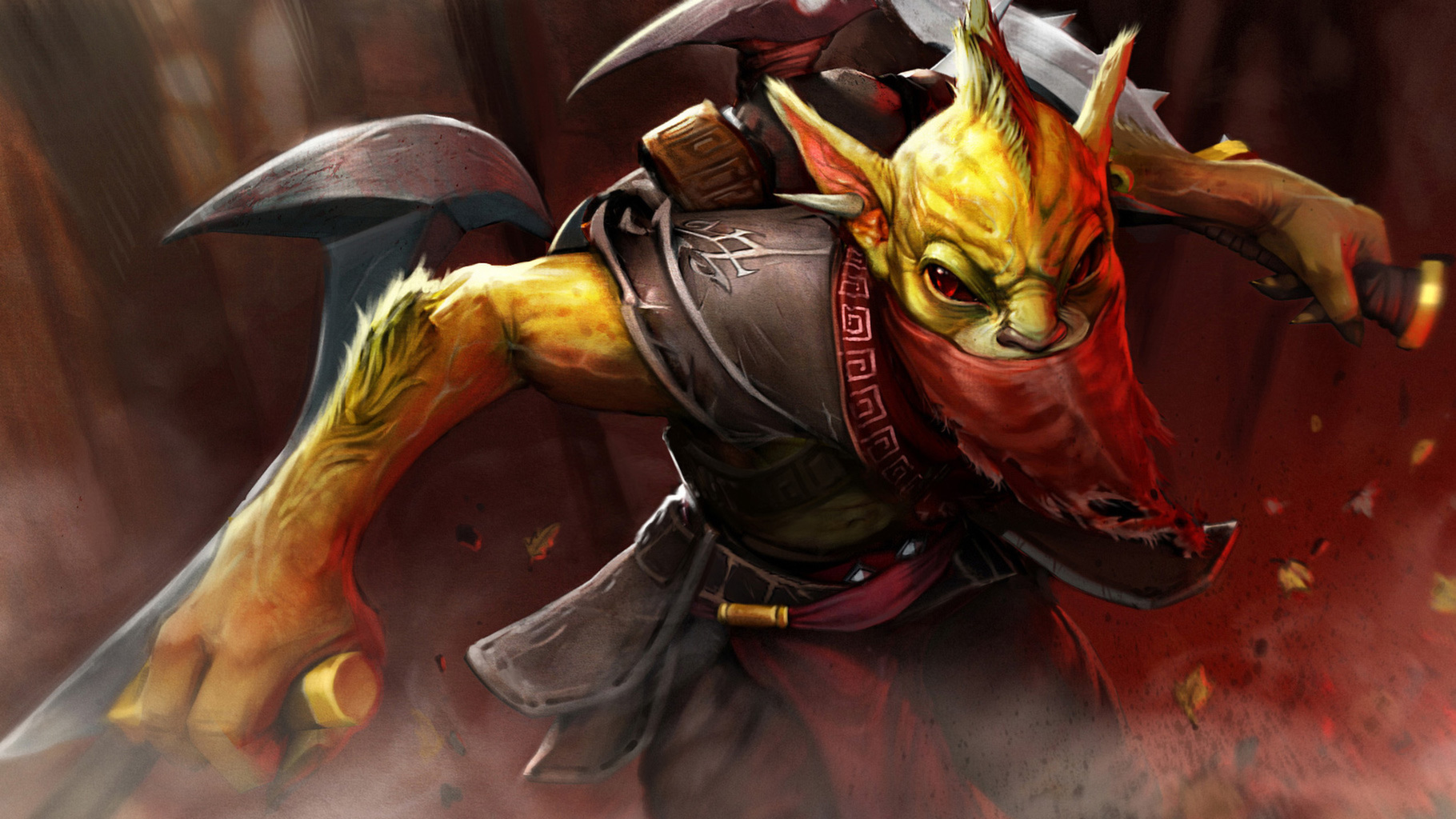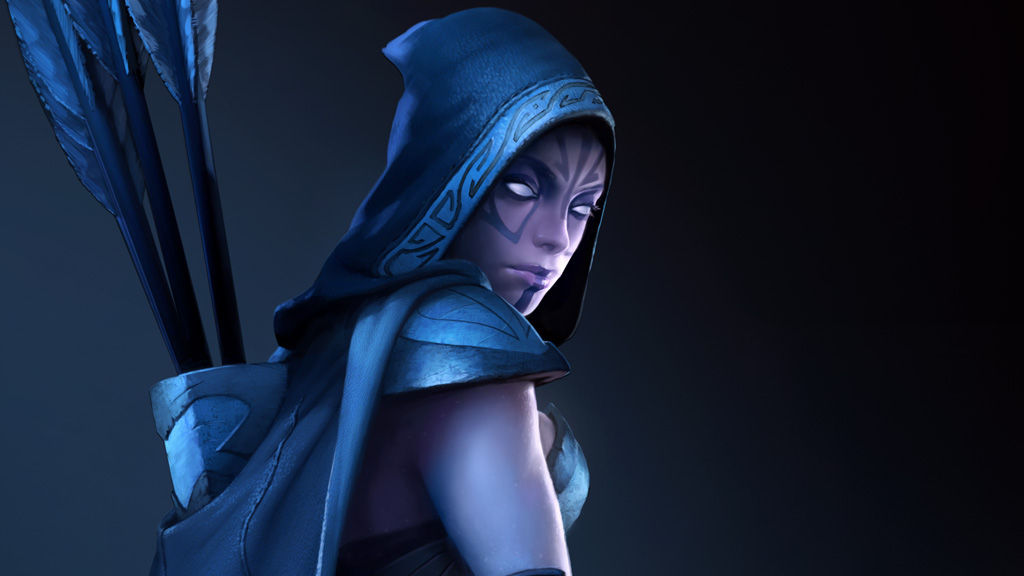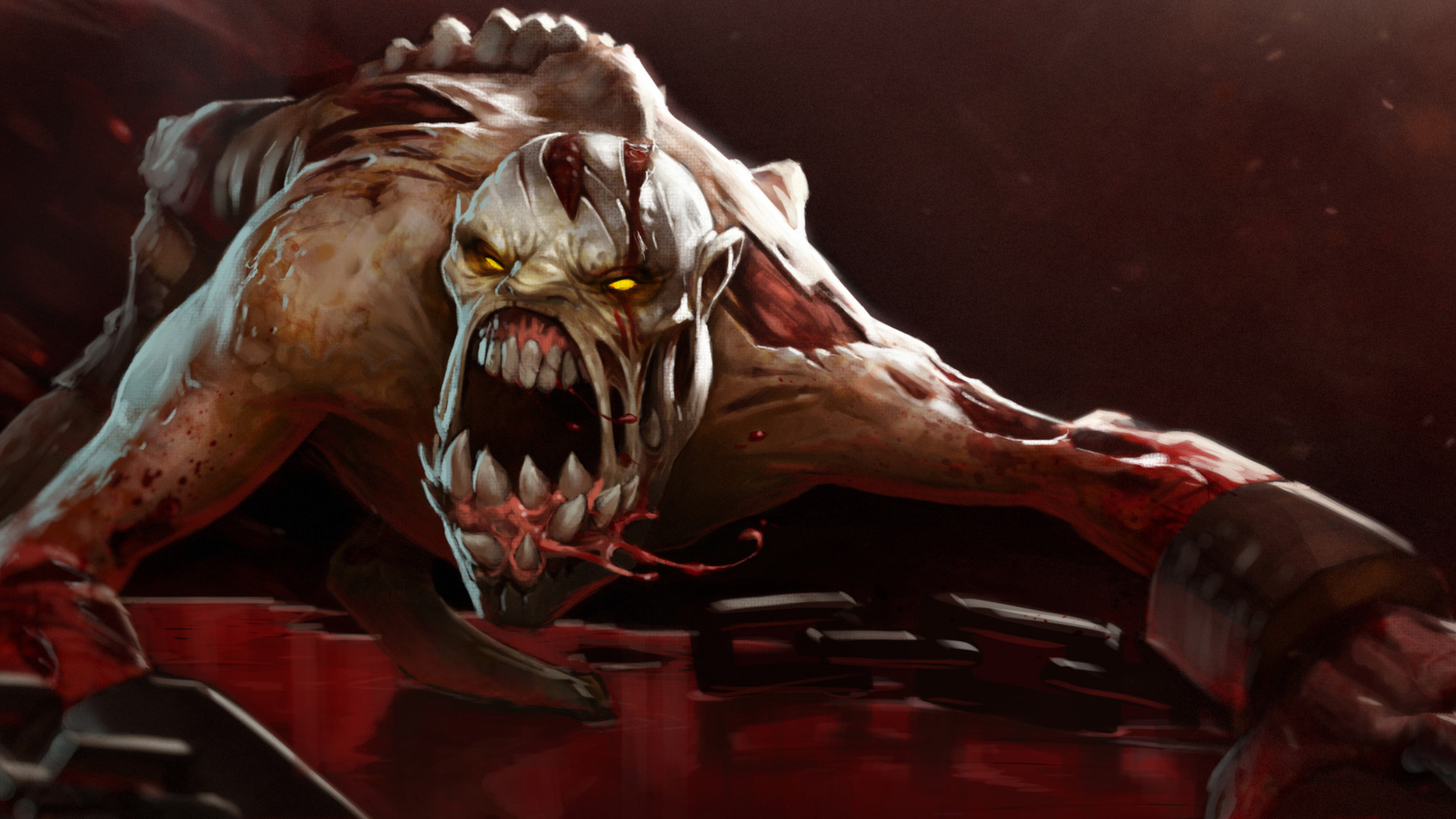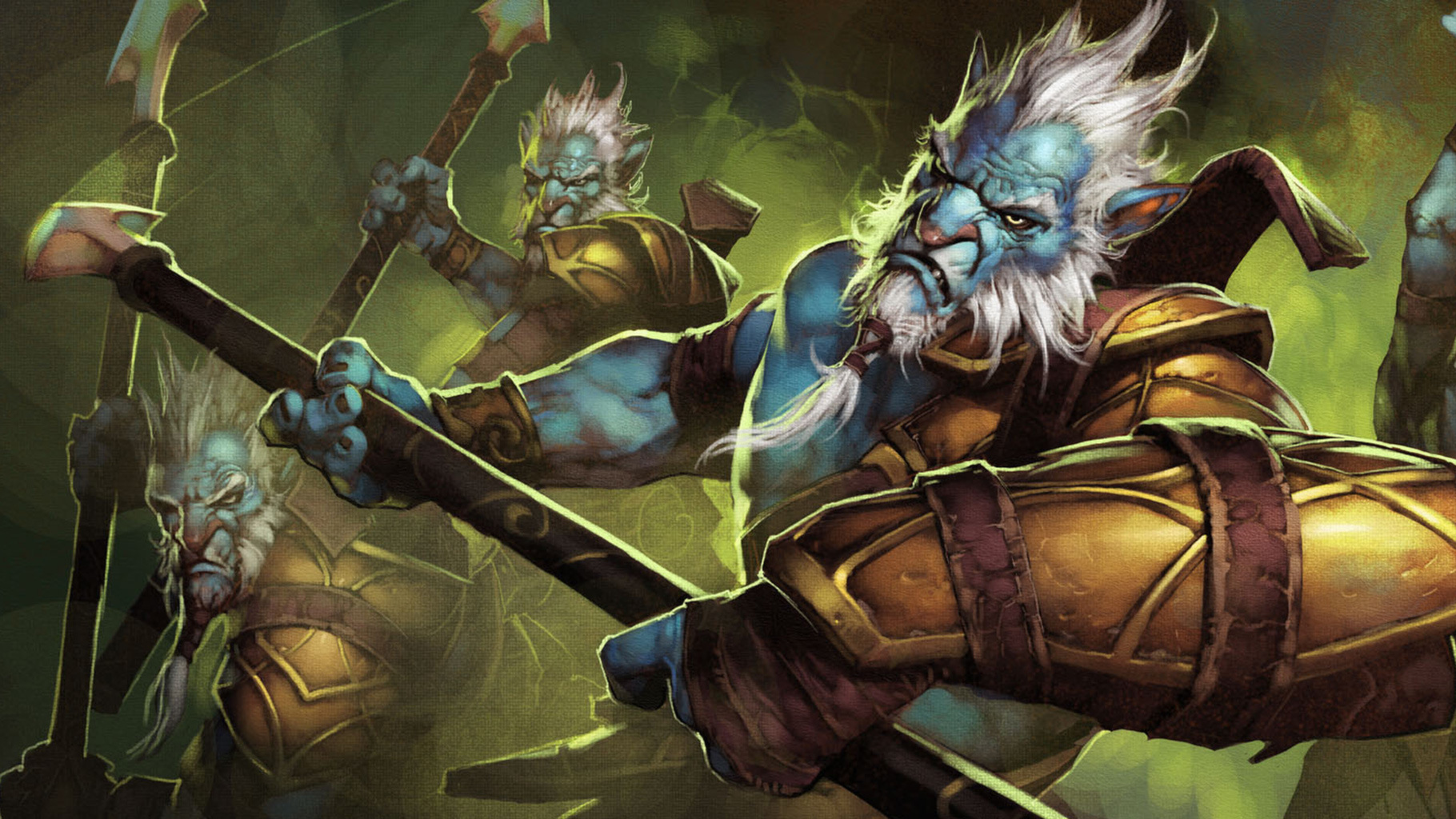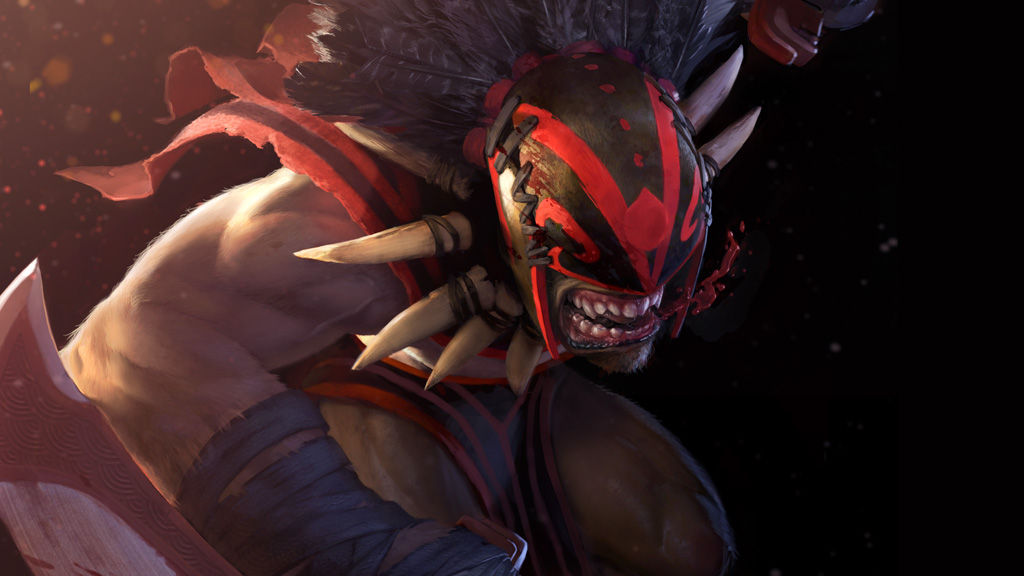Dota is a competitive game of action and strategy, played both professionally and casually by millions of passionate fans worldwide. Players pick from a pool of over a hundred heroes, forming two teams of five players. Radiant heroes then battle their Dire counterparts to control a gorgeous fantasy landscape, waging campaigns of cunning, stealth, and outright warfare.
Irresistibly colorful on the surface, Dota is a game of infinite depth and complexity. Every hero has an array of skills and abilities that combine with the skills of their allies in unexpected ways, to ensure that no game is ever remotely alike. This is one of the reasons that the Dota phenomenon has continued to grow. Originating as a fan-made Warcraft 3 modification, Dota was an instant underground hit. After coming to Valve, the original community developers have bridged the gap to a more inclusive audience, so that the rest of the world can experience the same core gameplay, but with the level of polish that only Valve can provide.
Get a taste of the game that has enthralled millions.
Irresistibly colorful on the surface, Dota is a game of infinite depth and complexity. Every hero has an array of skills and abilities that combine with the skills of their allies in unexpected ways, to ensure that no game is ever remotely alike. This is one of the reasons that the Dota phenomenon has continued to grow. Originating as a fan-made Warcraft 3 modification, Dota was an instant underground hit. After coming to Valve, the original community developers have bridged the gap to a more inclusive audience, so that the rest of the world can experience the same core gameplay, but with the level of polish that only Valve can provide.
Get a taste of the game that has enthralled millions.
Learning from the Past, Looking to the Future
Early Dota updates were diverse in form and scale, themed around everything from new heroes to new cosmetics, new gameplay modes to new client features. While details varied, all of these updates shared the same goal: generate a bunch of excitement and entertainment for existing Dota players and bring new players in. Some were successful (Diretide 2012); some were less successful (Diretide 2013). We learned from all of them and continued to experiment.
In 2013, two years into running The International, we saw how much fun people were having at the event and had a new idea: What if we could bring some of that fun to anybody who couldn't attend in person? So we created a digital companion to the event and called it The International Interactive Compendium.
The Compendium grew in scope over the years, and ultimately transformed into the Battle Pass, acquiring a reward line and spawning a wide variety of content. Features that earlier in Dota's history might have been fun themed updates, minigames and item sets, arcanas and voice lines, gradually got swallowed by the Battle Pass new game modes, new functionality, new cosmetics, anything that could fit.
The nature of the Battle Pass is such that it could grow to encompass just about any content we produce for Dota over the year. And, over the last few years, it did Battle Pass season has grown to be a tremendously exciting time in Dota, but it leaves the rest of the year feeling barren by comparison.
Last year, we started to ask ourselves whether Dota was well-served by having this single focal point around which all content delivery was designed. Each step we had taken made sense when considered independently: any single piece of content would be more valuable when bundled as part of the Battle Pass, so we bundled more and more. This led to a momentous content drop every year, but it also greatly limited our ability to do things that were exciting and valuable for players but didn't fit into the Battle Pass reward line.
When we recognized this, we made a deliberate choice earlier this year to run an experiment: to take some of the resources that would normally produce Battle Pass content and instead put them towards more speculative updates, including features and content that couldn't fit into a Battle Pass. While work is still in progress on future updates, the first of these has shipped: New Frontiers and patch 7.33 couldn't have shipped as they did if we were focusing all our efforts on producing Battle Pass content.
Most Dota players never buy a Battle Pass and never get any rewards from it. Every Dota player has gotten to explore the new map, play with the new items, and accidentally die to a Tormentor; every Dota player benefits from UI improvements and new client features. Community response to New Frontiers has helped us build confidence that working less on cosmetic content for the Battle Pass and more on a variety of exciting updates is the right long-term path for Dota as both a game and a community.
We're going to continue on the path that started with New Frontiers. This means we're building a wide variety of features and content for the game, delivered in different ways. We'll still ship a range of cosmetics over the year, but we're also going to ship more diverse updates for all Dota players to enjoy.
We recognize this affects The International. We're still huge fans of TI and we're excited for this year's event both as organizers and as attendees ourselves and work is well underway on a TI-themed update to ship in September. The update will still contribute directly to the prize pool, with a focus on the event, the players, and the games, but new cosmetic items won't play a notable part. This is a significant change from the last few years, so to make it clear that we're shifting focus towards the event and away from the giant reward line of cosmetics, we're intentionally not calling this update a Battle Pass.
We're excited for the future of Dota and for what these changes allow us to do. We're already working on the next updates, and a host of new cosmetic items and we've already started conversations with venues for TI 2024. By freeing Dota's update and content cycle from the timing and structural constraints of the Battle Pass, we can go back to making content in the way we know best: by coming up with fun ideas of all scales and shapes, and exploring them with you.

The ten year anniversary of Dota's public release is coming up (yes, we're working on some fun stuff for it; no, we're definitely not going to hit the July 9th date listed on Steam). As anniversaries go ten years is a big one, and while looking back is important, what's more important is how we approach the ten years to come. So we'd like to take this opportunity to share with you our thoughts on the long history of Dota updates, what we've learned, and how that helps our plans to make Dota even better in the decade ahead.
The Past
Early Dota updates were diverse in form and scale, themed around everything from new heroes to new cosmetics, new gameplay modes to new client features. While details varied, all of these updates shared the same goal: generate a bunch of excitement and entertainment for existing Dota players and bring new players in. Some were successful (Diretide 2012); some were less successful (Diretide 2013). We learned from all of them and continued to experiment.
In 2013, two years into running The International, we saw how much fun people were having at the event and had a new idea: What if we could bring some of that fun to anybody who couldn't attend in person? So we created a digital companion to the event and called it The International Interactive Compendium.
The Compendium grew in scope over the years, and ultimately transformed into the Battle Pass, acquiring a reward line and spawning a wide variety of content. Features that earlier in Dota's history might have been fun themed updates, minigames and item sets, arcanas and voice lines, gradually got swallowed by the Battle Pass new game modes, new functionality, new cosmetics, anything that could fit.
The nature of the Battle Pass is such that it could grow to encompass just about any content we produce for Dota over the year. And, over the last few years, it did Battle Pass season has grown to be a tremendously exciting time in Dota, but it leaves the rest of the year feeling barren by comparison.
The Present
Last year, we started to ask ourselves whether Dota was well-served by having this single focal point around which all content delivery was designed. Each step we had taken made sense when considered independently: any single piece of content would be more valuable when bundled as part of the Battle Pass, so we bundled more and more. This led to a momentous content drop every year, but it also greatly limited our ability to do things that were exciting and valuable for players but didn't fit into the Battle Pass reward line.
When we recognized this, we made a deliberate choice earlier this year to run an experiment: to take some of the resources that would normally produce Battle Pass content and instead put them towards more speculative updates, including features and content that couldn't fit into a Battle Pass. While work is still in progress on future updates, the first of these has shipped: New Frontiers and patch 7.33 couldn't have shipped as they did if we were focusing all our efforts on producing Battle Pass content.
Most Dota players never buy a Battle Pass and never get any rewards from it. Every Dota player has gotten to explore the new map, play with the new items, and accidentally die to a Tormentor; every Dota player benefits from UI improvements and new client features. Community response to New Frontiers has helped us build confidence that working less on cosmetic content for the Battle Pass and more on a variety of exciting updates is the right long-term path for Dota as both a game and a community.
The Future
We're going to continue on the path that started with New Frontiers. This means we're building a wide variety of features and content for the game, delivered in different ways. We'll still ship a range of cosmetics over the year, but we're also going to ship more diverse updates for all Dota players to enjoy.
We recognize this affects The International. We're still huge fans of TI and we're excited for this year's event both as organizers and as attendees ourselves and work is well underway on a TI-themed update to ship in September. The update will still contribute directly to the prize pool, with a focus on the event, the players, and the games, but new cosmetic items won't play a notable part. This is a significant change from the last few years, so to make it clear that we're shifting focus towards the event and away from the giant reward line of cosmetics, we're intentionally not calling this update a Battle Pass.
We're excited for the future of Dota and for what these changes allow us to do. We're already working on the next updates, and a host of new cosmetic items and we've already started conversations with venues for TI 2024. By freeing Dota's update and content cycle from the timing and structural constraints of the Battle Pass, we can go back to making content in the way we know best: by coming up with fun ideas of all scales and shapes, and exploring them with you.
[ 2023-06-19 22:01:28 CET ] [Original Post]
Minimum Setup
- OS: Ubuntu 12.04 or newer
- Processor: Dual core from Intel or AMD at 2.8 GHzMemory: 4 GB RAM
- Memory: 4 GB RAM
- Graphics: AMD GCN+. NVIDIA Kepler+. or Intel HD 5000-series or newerNetwork: Broadband Internet connection
- Storage: 60 GB available space
GAMEBILLET
[ 6487 ]
GAMERSGATE
[ 2234 ]
MacGamestore
[ 1974 ]
FANATICAL BUNDLES
HUMBLE BUNDLES
by buying games/dlcs from affiliate links you are supporting tuxDB


